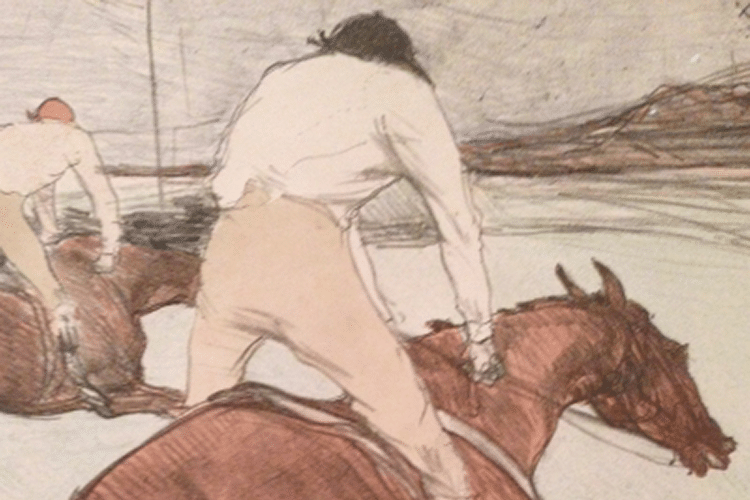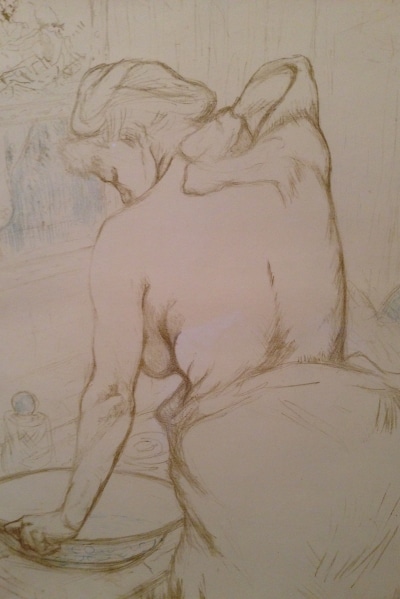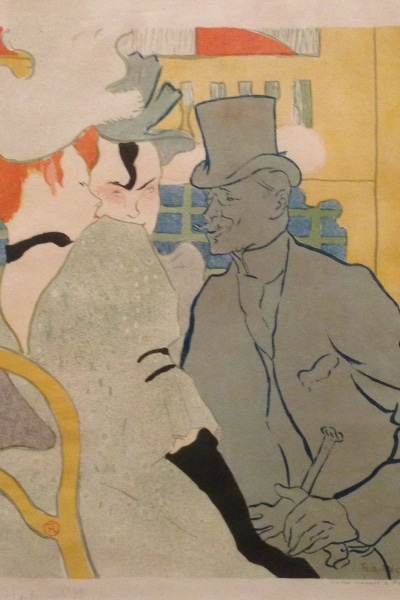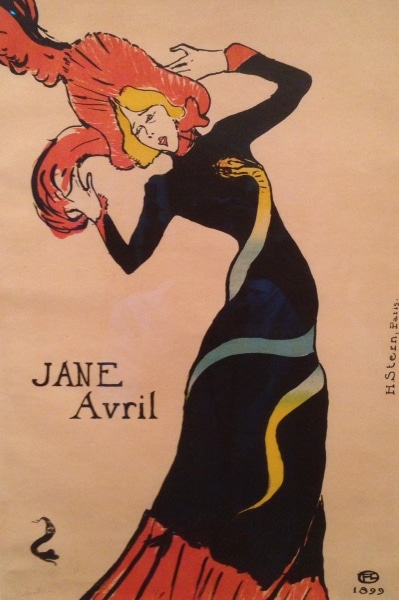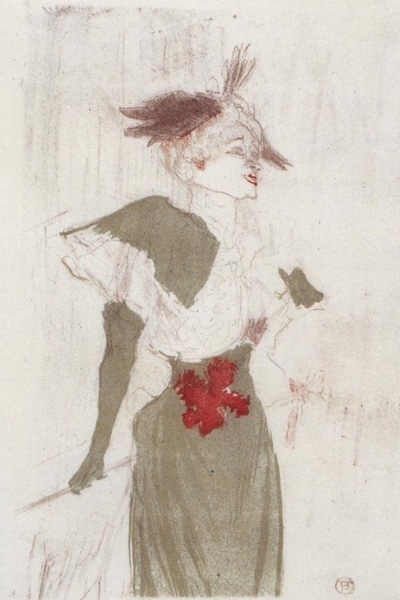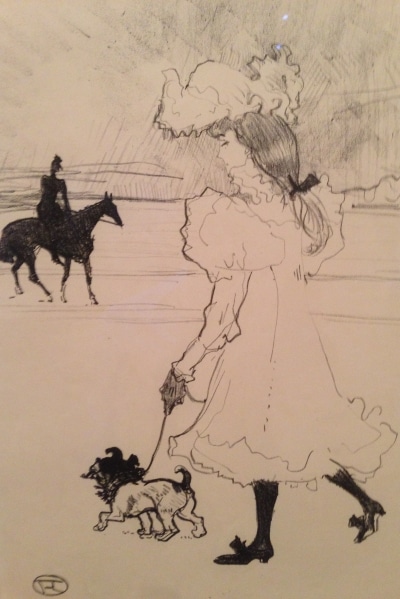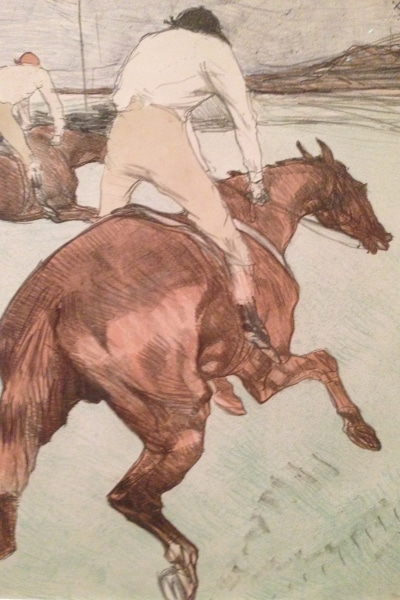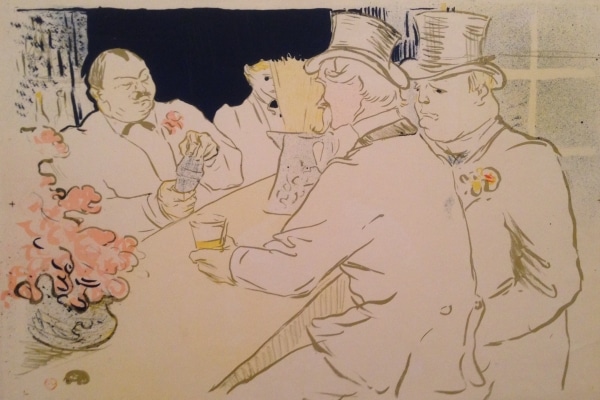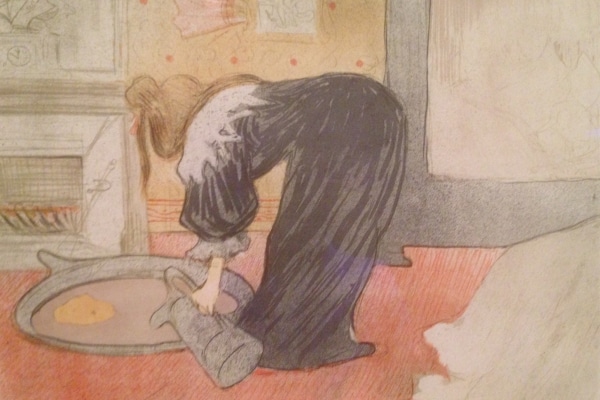Henri de Toulouse-Lautrec wasn’t one for convention. At a time when Monet was taken primarily with nature and Renoir the world of ballet, Toulouse-Lautrec’s interests were a bit more prurient – the raucous sideshow of late 19th century Parisian nightlife. By having lithographs created from his sketches, he was quick to figure out that his work could reach the masses in a way that a single painting never could. Sometimes sordid and at other times surprisingly staid, he was a prolific force who transformed his escapades into masterpieces. At New York’s Museum of Modern Art exhibit, The Paris of Toulouse-Lautrec: Prints and Posters, one can see how he immortalized the heyday of the Moulin Rouge.
Visitors to the museum will be fascinated by these prints if for no other reason than realizing that Monsieur Toulouse-Lautrec sought to be entertained. How many of us, both New York City residents and tourists alike, hunt for the same thing while exploring new destinations? For some of us, that could mean touring cities and towns that exude an energy that matches our own. Paris was Toulouse-Lautrec’s city. He considered it his personal playground and through his art, he takes us on a tour.
The exhibit is broken into five areas and arranged thematically:
- The Café-Concert
- On Stage
- Creative Circles
- The Pleasures of Paris and
- Femmes/Filles/Elles.
A concise biography at the entrance briefs us on the artist’s aristocratic origins and informs us that his parents were first cousins which likely spawned his persistent health issues. He topped out at 4’11” after breaking both legs in his teens and required a cane until his death at age 36. Life was nonetheless optimistic in Paris during La Belle Époque (literally the “beautiful era”), which gave way to the nonconformist ideas and unchecked behavior that Toulouse-Lautrec exemplified both artistically and personally.
His specialty was rendering performers at café-concerts and dance halls, though Toulouse-Lautrec was equally intrigued by patrons. In one of the first prints exhibited, Englishman at the Moulin Rouge, we see a distinguished man attempting to engage two courtesans, one of whom recoils while the other leers in earnest. This was a common exchange at the famed cabaret, but it was Toulouse-Lautrec who decided to document it. Adjacent to this we meet the female muses who inspired some of his greatest works. If Toulouse-Lautrec can be considered Warhol’s predecessor with respect to utilizing print, then Jane Avril was his Marilyn Monroe. Renowned for her high kicks, Avril was the only dancer Toulouse-Lautrec portrayed both inside and outside the venue. He deftly captured her movements, cementing an enigma with the contours of her lithe figure. Also showcased here is the woman whom Avril displaced, the infamous Louise Weber, or as we know her, La Goulue (“The Glutton”). A former laundress whose reputation preceded her, La Goulue was the most recognized and lauded star of Montmartre before Avril stole the spotlight. Perhaps Toulouse-Lautrec not only foreshadowed Warhol in the print department but likewise anticipated his idea that everyone would have fifteen minutes of fame.
The exhibit’s second room gives a glimpse into the artist’s more conservative works. While Toulouse-Lautrec definitely had a penchant for the underworld, he was anything but one-dimensional. Here we see various book and sheet music covers he illustrated (Les Vieilles Histoires, Carnot Malade!), along with theatre programs reminiscent of the playbill we receive at a show today. This segues to the Pleasures of Paris which shows a profound appreciation for nature with scenes sketched in the Bois de Boulogne, a large park on the edge of the 16th arrondissement. Images of a wealthy woman walking her dog through the park alongside two horses galloping in Le Jockey are quite sober – Toulouse-Lautrec was able to derive inspiration from relatively halcyon scenes as well. Old habits die hard, however; next to these works of tranquility is Irish American Bar, Rue Royale, a favored haunt where patrons would often find the artist, a big drinker, holding court while tending bar.
Wrapping back to the main room, we’re met by prints from the portfolio Elles, one of Toulouse-Lautrec’s most enduring works. The idea behind Elles was to illustrate a brothel during daytime hours and this was commissioned by a publisher banking on the lurid subject matter to be lucrative. Instead, Toulouse-Lautrec opted to represent these women with a delicate reverence – the Woman at Her Toilette Washing Herself is shown innocuously from behind while in a Woman at the Tub the subject is fully clothed. There is nothing degrading or salacious about these portraits, they are simply sketches of what the artist observed. This was what Toulouse-Lautrec did best; he depicted society’s misfits and executed them honestly and without judgment. Vital to his motley cast of characters, they were the central reason why Paris brought this artist and more significantly, his artwork, to life. He would have fit in quite well in New York City.
[alert type=white]
Museum of Modern Art
11 W. 53rd Street
New York, NY 10019
*Running through March 22nd, 2015
Hours:
Sunday-Thursday and Saturday – 1030am-530pm
Friday – 1030am-8pm [/alert]

